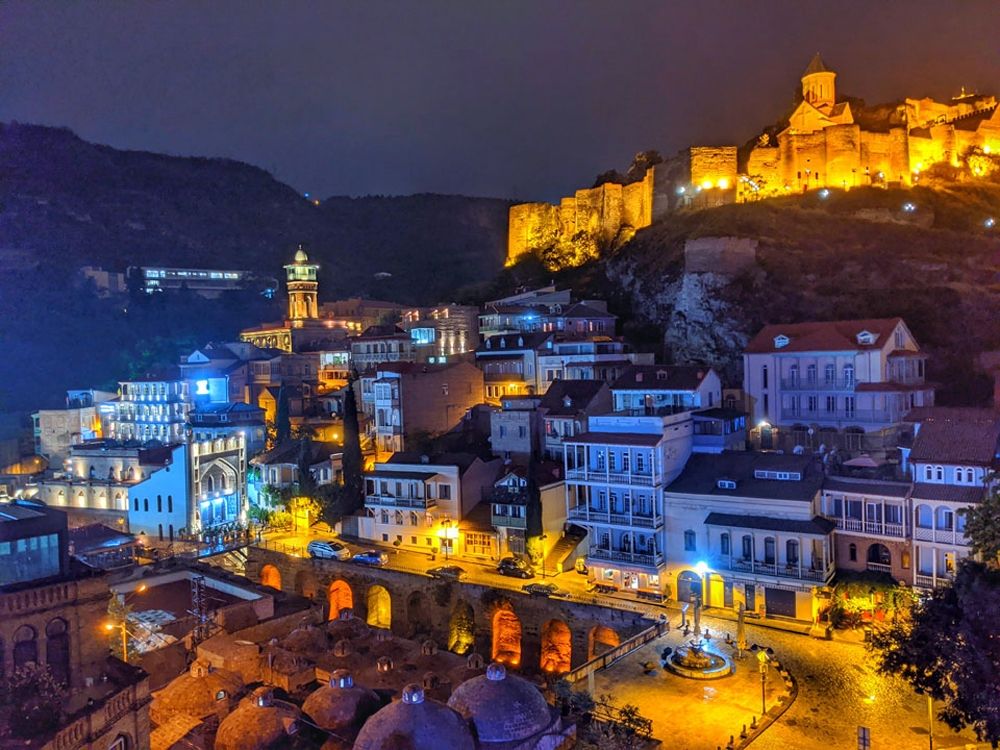


Sulfur Baths located in one of the most unique and recognizable neighborhoods in Tbilisi (Abanotubani). The sulfur baths are a great way to relax, not to mention the countless health benefits that come with them. There is a lot of variety when it comes to choosing which bathhouse to visit, but they all have a shared history.
Meaning and history:
Abanotubani, literally meaning “bath district”, is an ancient part of Tbilisi, known for its famous brick houses and sulfur bathhouses. The origin of the bathhouse district dates back to when the city was founded and plays an important part in its history. According to the legend, when the falcon of King Vakhtang Gorgasali fell in one of the hot springs, the king decided to build the capital on top of the springs.
As a result, Tbilisi earned its name (‘warm place’) from the very same hot springs that ran under the city, and which eventually became the foundation for the bathhouses. Many of the bathhouses were inspired by traditional Persian-style baths, but the difference is that the water in Tbilisi is not manually heated. Instead, it comes from the ground and is naturally hot.
The sulfur baths have long been very popular. Famous visitors in the past include the legendary Russian poet Alexander Pushkin. During his visit in 1829, complimented them, saying: “Not since I was born have I encountered the luxury of Tiflis’ baths.” And that is a really accurate way of summing them up. The bathhouses are also said to have countless health benefits. The sulfur in the water helps with dry skin, rashes, joint problems, acne and more.


Sulfur Baths located in one of the most unique and recognizable neighborhoods in Tbilisi (Abanotubani). The sulfur baths are a great way to relax, not to mention the countless health benefits that come with them. There is a lot of variety when it comes to choosing which bathhouse to visit, but they all have a shared history.
Meaning and history:
Abanotubani, literally meaning “bath district”, is an ancient part of Tbilisi, known for its famous brick houses and sulfur bathhouses. The origin of the bathhouse district dates back to when the city was founded and plays an important part in its history. According to the legend, when the falcon of King Vakhtang Gorgasali fell in one of the hot springs, the king decided to build the capital on top of the springs.
As a result, Tbilisi earned its name (‘warm place’) from the very same hot springs that ran under the city, and which eventually became the foundation for the bathhouses. Many of the bathhouses were inspired by traditional Persian-style baths, but the difference is that the water in Tbilisi is not manually heated. Instead, it comes from the ground and is naturally hot.
The sulfur baths have long been very popular. Famous visitors in the past include the legendary Russian poet Alexander Pushkin. During his visit in 1829, complimented them, saying: “Not since I was born have I encountered the luxury of Tiflis’ baths.” And that is a really accurate way of summing them up. The bathhouses are also said to have countless health benefits. The sulfur in the water helps with dry skin, rashes, joint problems, acne and more.









